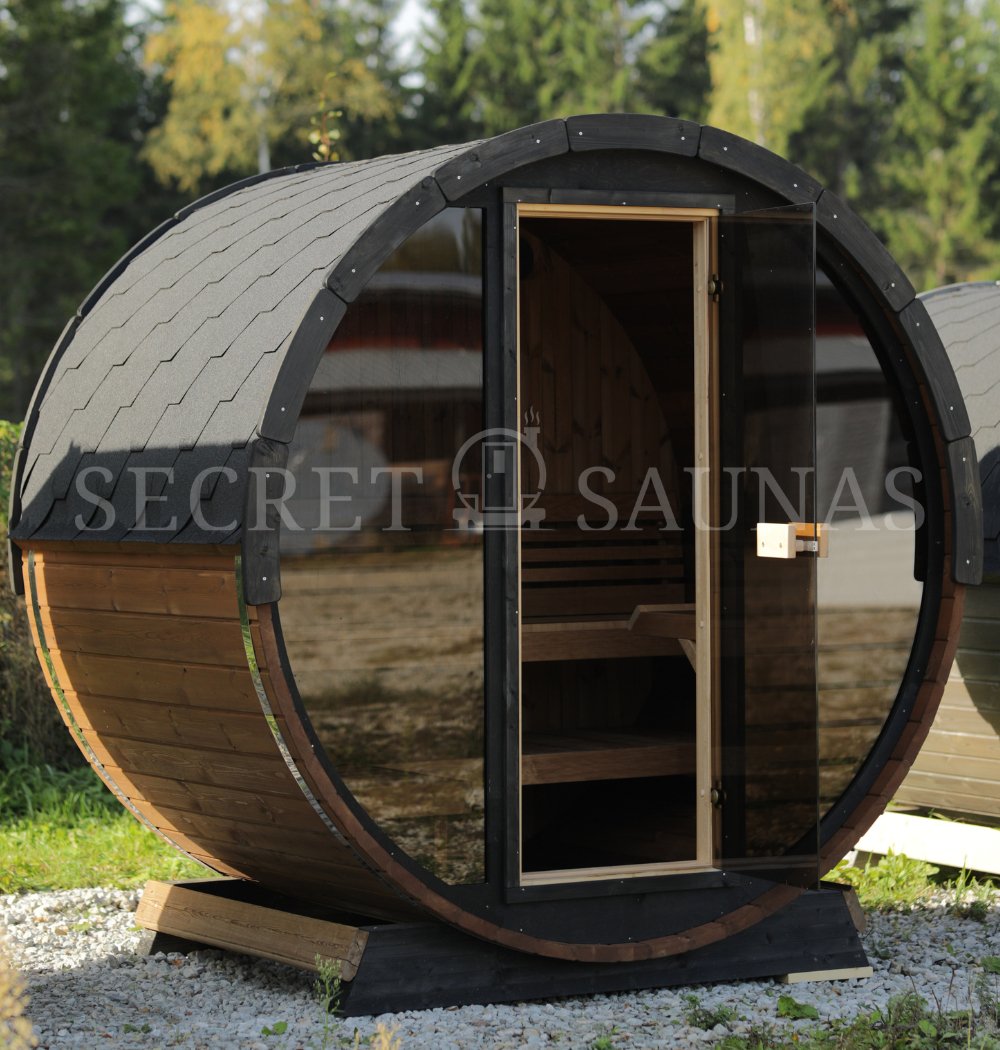Traditional Saunas
What are Traditional Saunas?
Traditional saunas, originate from Finland and have spread globally as a luxury spa experience. They are typically wood-lined cabins heated by a rock-filled electric sauna heaters. Users pour water over the heated rocks to generate steam, increasing the humidity and inducing sweat. These saunas which are often made from woods such as cedar or hemlock, offer a dry heat that promotes detoxification and improves circulation.
Are Traditional Finnish Saunas and Steam Saunas the same thing?
The word 'steam sauna' can sometimes be associated with steam rooms which are very different from saunas and work by maintaining a constant level of high humidity and at a lower temperature. In contract traditional saunas electric or wood burning heaters that reach very high temperatures that create a dry heat. Although they are therefore sometimes referred to as 'Dry saunas', this isn't strictly true. The purpose of sauna rocks that sit on top of the heater is to allow bathers to splash water over the rocks to generate steam and adjust the humidity as preferred.
Traditionally almost all home saunas would be built as outdoor structures. It's only as urbanization has resulted in people living in more built-up areas that we've started installing saunas inside the home. Typically these come in two forms, a barrel shape which is the most popular design sold in the USA, or the cabin shape, which is more common in Europe. Both have pro's and cons so please read below to understand the key differences.
Outdoor traditional saunas, are exactly as they sound - Outdoor structures that are designed to including barrel saunas and cabin-style saunas, bring the sauna experience to your backyard. Built to withstand the elements, these saunas are often made from durable woods like cedar, known for its resistance to rot and insects. Outdoor saunas provide a retreat for relaxation and wellness, allowing users to step out of their daily life and into a space of heat and tranquility. They are an excellent choice for those looking to combine the sauna experience with the beauty of the outdoors.
With a highly aesthetically pleasing cylindrical design, the barrel sauna is the most common choice for homeowners in America. Due to the compact internal space these models heat up very quickly and offer a great sauna experience at an affordable price. The main advantage of these models is the parallel benches which is perfect for couples that want to lie down on a bench each.
The key disadvantages of barrel saunas is the proximity to the heater which is often directly next to the bathers. The benches are also positioned quite low which can result in poor heat circulation, particularly around the feet.
Looking more akin to a large shed, the cabin sauna is the European standard. These have a larger internal area that takes longer to heat but offers a far better experience once inside. The additional height allows the heat to rise to the top of the sauna where users can relax and enjoy the infamous Loyly pocket. The two tier benches also provide the option to sit up high, or down low depending on the preferred temperature.
The main disadvantage of cabin saunas are for couples looking to both lie down in the sauna, this isn't a problem if you both prefer to sit at different heights though. Another issue is the heat up time which can be an additional 5-10 minutes longer than a barrel sauna.
Indoor Traditional Saunas
Indoor saunas are a convenient luxury for those with minimal or no outdoor space. These are most commonly installed in the bathroom to allow users to enjoy a spa-experience within the comfort and privacy of their homes. Indoor models are almost exclusively run using electric heaters which require specialist to install due to the energy outputs. We offer several models using a range of premium wood construction, such as European Thermowood, Canadian cedar or hemlock. Brands like SaunaLife and Finnmark are known for their high-quality craftsmanship, offering a range of traditional home sauna kits to fit different spaces and preferences.
Traditional Vs Infrared Saunas
Infrared saunas and Finnish saunas offer very different experiences. Infrared saunas use infrared panels to heat the body directly, operating at lower temperatures than traditional Finnish saunas. They are known for their deep tissue relaxation, detoxification, and convenience. In contrast, a traditional steam sauna provides an intense heat that reaches far higher temperatures with control over the steam levels.
Heat sources: Electric Sauna Heaters or Sauna Wood Stoves
Electric Sauna Heaters are idea for people living in built up areas where the smoke from a wood fired stove may be unwelcome. These are the most affordable models, turn on with the switch of a button or the swipe of an app and require very little maintenance. Electric heaters do require installation by a professional electrician which can be expensive depending on where in your home or garden the sauna is located, and also have higher long term running costs due to the energy usage.
Sauna Wood Stoves are perfect for people that live in rural areas or want a truly traditional sauna session. Although these are more expensive to buy and install initially the long term running costs are far lower if you have steady wood supply. Regular cleaning of ashes and chopping of wood makes the maintenance more labor intensive than an electric sauna heater but the special experience it offers is totally worth it.
Whether you choose an indoor traditional steam sauna, an outdoor traditional sauna, or an infrared sauna, the benefits extend beyond mere relaxation. From the luxurious appeal of cedar and hemlock woods to the health benefits of heat and steam, saunas are a timeless addition to any garden or home. Brands like SaunaLife, Dundalk Leisurecraft & Almost Heaven offer a wide range traditional sauna kits that all come with a full warranty and free delivery.




















































